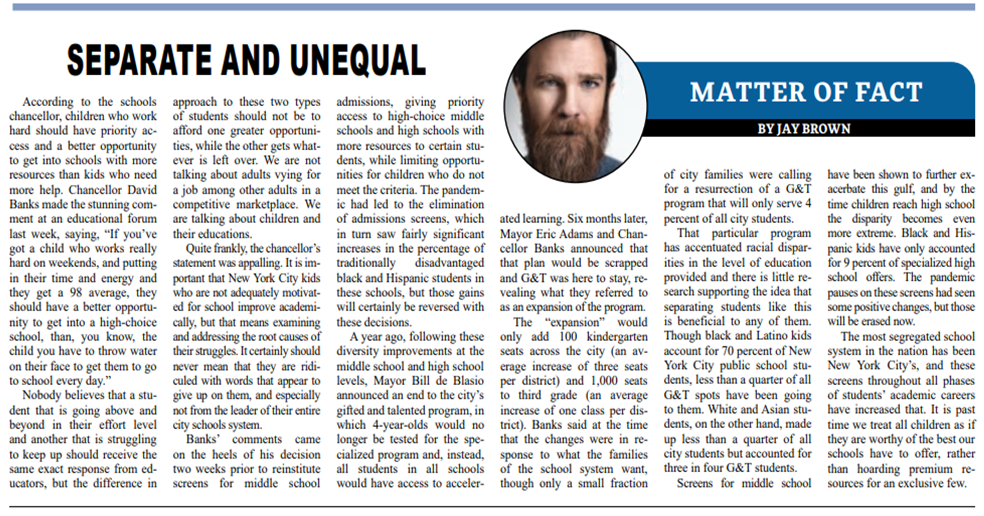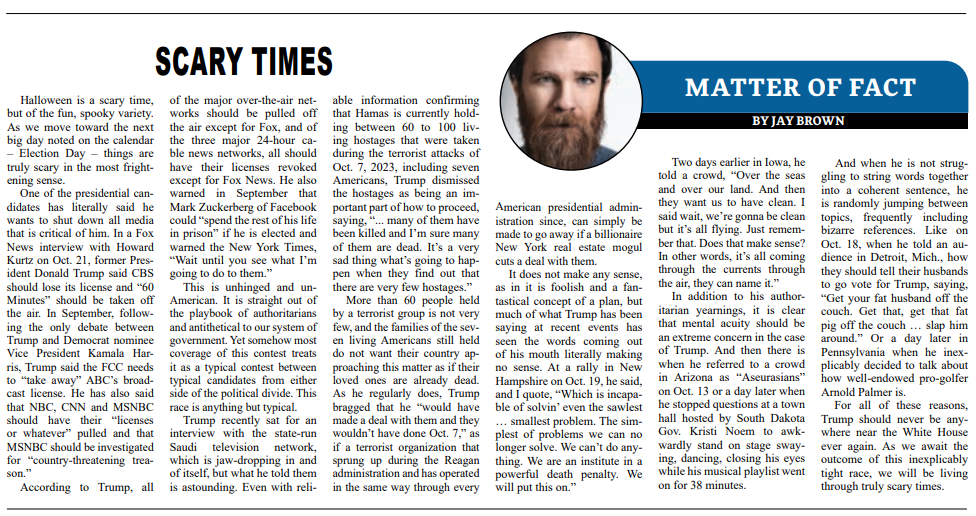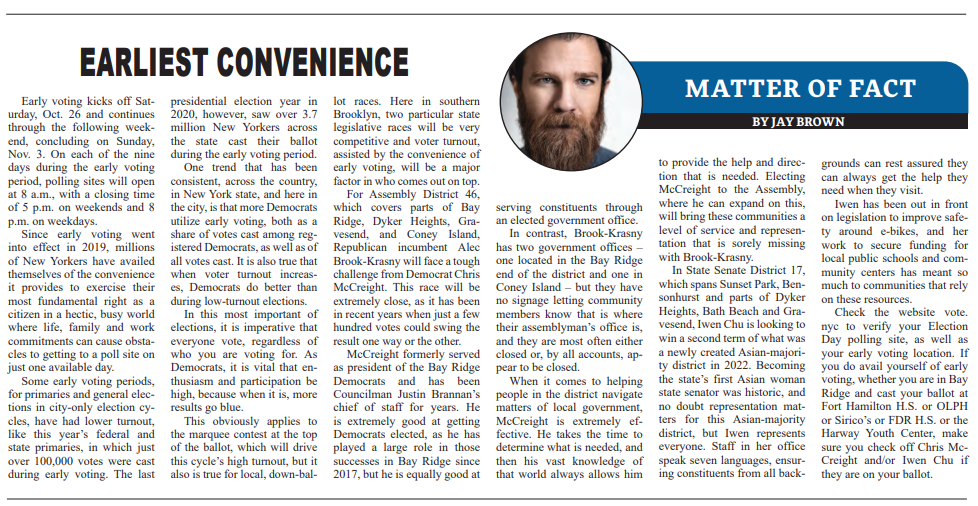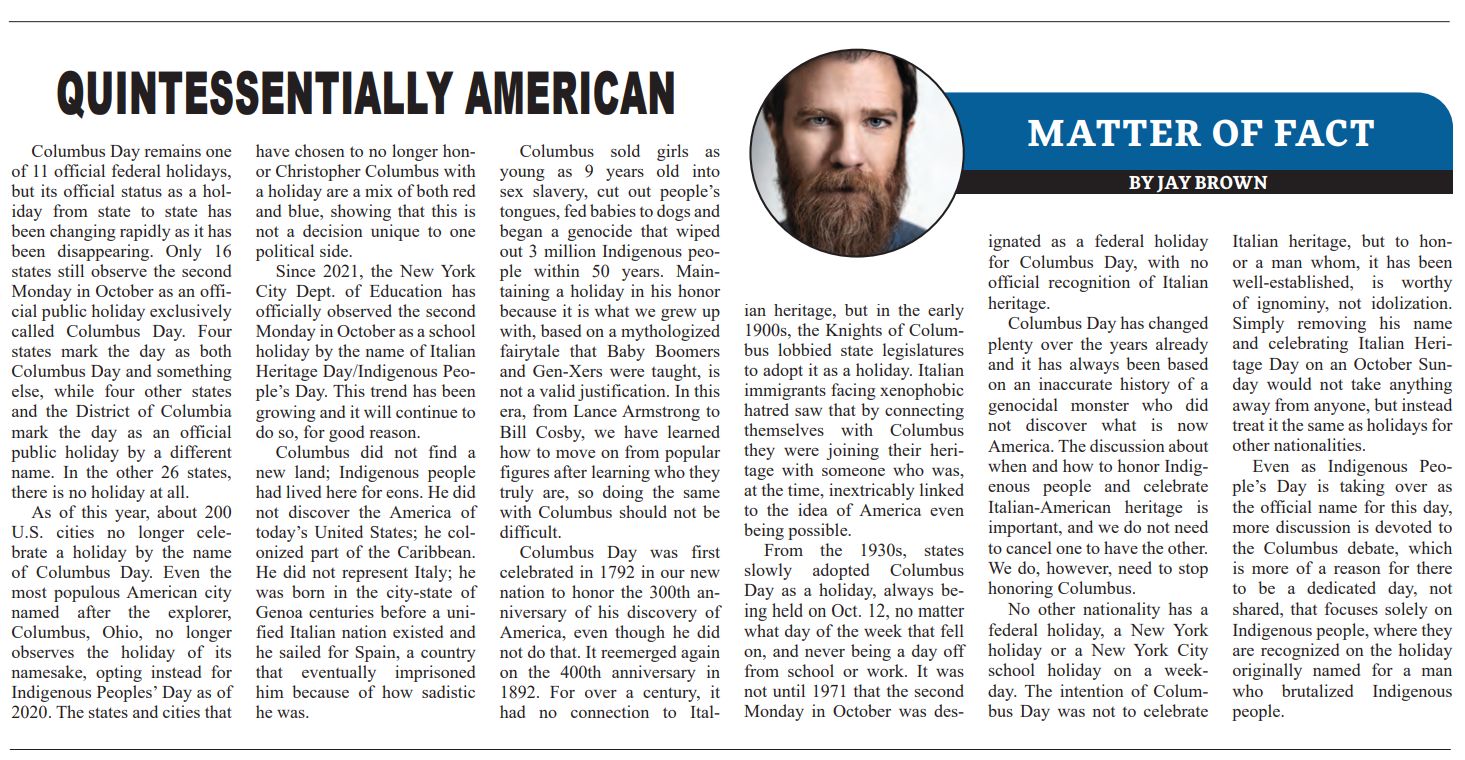This column, from the weekly opinion piece MATTER OF FACT, first appeared on BrooklynReporter.com, the Home Reporter and Spectator datedOctober 21, 2022
According to the Schools Chancellor, children who work hard should have priority access and a better opportunity to get into schools with more resources than kids that need more help. Chancellor Banks made the stunning comment at an educational forum last week, saying, “If you’ve got a child who works really hard on weekends, and putting in their time and energy and they get a 98 average, they should have a better opportunity to get into a high-choice school, then, you know, the child you have to throw water on their face to get them to go to school every day.”
Nobody believes that a student that is going above and beyond in their effort level and another that is struggling to keep up should receive the same exact response from educators, but the difference in approach to these two types of students should not be to afford one greater opportunities, while the other gets whatever is left over. We are not talking about adults vying for a job amongst other adults in a competitive marketplace. We are talking about children and their educations.
Quite frankly, the Chancellor’s statement was appalling. It is important that New York City kids who are not adequately motivated for school, improve academically, but that means examining and addressing the root causes of their struggles. It certainly should never mean that they are ridiculed with words that appear to give up on them, and especially not from the leader of their entire city schools system.
Banks’s comments came on the heels of his decision two weeks prior to reinstitute screens for middle school admissions, giving priority access to high-choice middle schools and high schools with more resources to certain students, while limiting opportunities for children who do not meet the criteria. The pandemic had led to the elimination of admissions screens, which in turn saw fairly significant increases in the percentage of traditionally disadvantaged Black and Hispanic students in these schools, but those gains will certainly be reversed with these decisions.
“If you’ve got a child who works really hard on weekends, and putting in their time and energy and they get a 98 average, they should have a better opportunity to get into a high-choice school, then, you know, the child you have to throw water on their face to get them to go to school every day.”
NYC Schools Chancellor David Banks at October 13, 2022 Educational Forum
A year ago, following these diversity improvements at the middle school and high school levels, Mayor de Blasio announced an end to the city’s gifted and talented program, in which four-year-olds would no longer be tested for the specialized program and instead, all students in all schools would have access to accelerated learning. Six months later, Mayor Adams and Chancellor Banks announced that that plan would be scrapped and G&T was here to stay, revealing what they referred to as an expansion of the program.
The “expansion” would only add 100 kindergarten seats across the city (an average increase of three seats per district) and 1,000 seats to third grade (an average increase of one class per district). Banks said at the time that the changes were in response to what the families of the school system want, though only a small faction of city families were calling for a resurrection of a G&T program that will only serve 4 percent of all city students.
That particular program has accentuated racial disparities in the level of education provided and there is little research supporting the idea that separating students like this is beneficial to any of them. Though Black & Latino kids account for 70 percent New York City public school students, less than a quarter of all G&T spots have been going to them. White and Asian students, on the other hand, made up less than a quarter of all city students but accounted for three in four G&T students.
Screens for middle school have been shown to further exacerbate this gulf and by the time children reach high school, the disparity becomes even more extreme. Black and Hispanic kids have only accounted for nine percent of specialized high school offers. The pandemic pauses on these screens had seen some positive changes, but those will be erased now.
The most segregated school district in the nation has been New York City’s, and these screens throughout all phases of students’ academic careers have increased that. It is passed time we treat all children as if they are worthy of the best our schools have to offer, rather than hoarding premium resources for an exclusive few.




